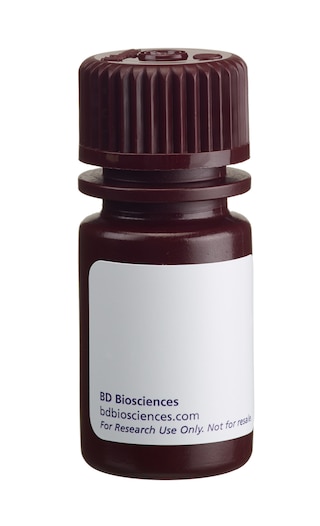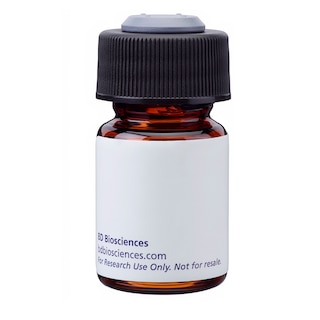-
Your selected country is
Middle East / Africa
- Change country/language
Old Browser
This page has been recently translated and is available in French now.
Looks like you're visiting us from {countryName}.
Would you like to stay on the current country site or be switched to your country?


.png)

Flow cytometric analysis of ICOS (CD278) expression on stimulated human peripheral blood lymphocytes. Unstimulated (Left Plot) and phytohemagglutinin (PHA)-stimulated (3 days; Right Plot) peripheral blood mononuclear cells were stained with either Alexa Fluor® 488 Mouse IgG1 κ Isotype Control (Cat. No. 565572; dashed line histograms) or Alexa Fluor® 488 Mouse Anti-Human ICOS (CD278) antibody (Cat. No. 567003/567004; solid line histograms). BD Via-Probe™ Cell Viability 7-AAD Solution (Cat. No. 555815/555816) was added to cells right before analysis. The fluorescence histograms showing ICOS (CD278) expression (or Ig Isotype control staining) were derived from gated events with the forward and side light-scatter characteristics of viable (7-AAD-negative) lymphocytes. Flow cytometry and data analysis were performed using a BD LSRFortessa™ Cell Analyzer System and FlowJo™ software.
.png)

BD Pharmingen™ Alexa Fluor® 488 Mouse Anti-Human ICOS (CD278)
.png)
Regulatory Status Legend
Any use of products other than the permitted use without the express written authorization of Becton, Dickinson and Company is strictly prohibited.
Preparation And Storage
Recommended Assay Procedures
BD™ CompBeads can be used as surrogates to assess fluorescence spillover (Compensation). When fluorochrome conjugated antibodies are bound to CompBeads, they have spectral properties very similar to cells. However, for some fluorochromes there can be small differences in spectral emissions compared to cells, resulting in spillover values that differ when compared to biological controls. It is strongly recommended that when using a reagent for the first time, users compare the spillover on cells and CompBead to ensure that BD Comp beads are appropriate for your specific cellular application.
Product Notices
- This reagent has been pre-diluted for use at the recommended Volume per Test. We typically use 1 × 10^6 cells in a 100-µl experimental sample (a test).
- An isotype control should be used at the same concentration as the antibody of interest.
- Source of all serum proteins is from USDA inspected abattoirs located in the United States.
- Caution: Sodium azide yields highly toxic hydrazoic acid under acidic conditions. Dilute azide compounds in running water before discarding to avoid accumulation of potentially explosive deposits in plumbing.
- The Alexa Fluor®, Pacific Blue™, and Cascade Blue® dye antibody conjugates in this product are sold under license from Molecular Probes, Inc. for research use only, excluding use in combination with microarrays, or as analyte specific reagents. The Alexa Fluor® dyes (except for Alexa Fluor® 430), Pacific Blue™ dye, and Cascade Blue® dye are covered by pending and issued patents.
- Alexa Fluor® 488 fluorochrome emission is collected at the same instrument settings as for fluorescein isothiocyanate (FITC).
- Alexa Fluor® is a registered trademark of Molecular Probes, Inc., Eugene, OR.
- For fluorochrome spectra and suitable instrument settings, please refer to our Multicolor Flow Cytometry web page at www.bdbiosciences.com/colors.
- This product is provided under an intellectual property license between Life Technologies Corporation and BD Businesses. The purchase of this product conveys to the buyer the non-transferable right to use the purchased amount of the product and components of the product in research conducted by the buyer (whether the buyer is an academic or for-profit entity). The buyer cannot sell or otherwise transfer (a) this product (b) its components or (c) materials made using this product or its components to a third party or otherwise use this product or its components or materials made using this product or its components for Commercial Purposes. Commercial Purposes means any activity by a party for consideration and may include, but is not limited to: (1) use of the product or its components in manufacturing; (2) use of the product or its components to provide a service, information, or data; (3) use of the product or its components for therapeutic, diagnostic or prophylactic purposes; or (4) resale of the product or its components, whether or not such product or its components are resold for use in research. For information on purchasing a license to this product for any other use, contact Life Technologies Corporation, Cell Analysis Business Unit Business Development, 29851 Willow Creek Road, Eugene, OR 97402, USA, Tel: (541) 465-8300. Fax: (541) 335-0504.
- Please refer to http://regdocs.bd.com to access safety data sheets (SDS).
- Please refer to www.bdbiosciences.com/us/s/resources for technical protocols.
Companion Products


.png?imwidth=320)


The DX29 monoclonal antibody specifically binds to human CD278, which is also known as Inducible Costimulator (ICOS) or Inducible T-cell Costimulator. ICOS is a homodimeric type I transmembrane glycoprotein with an approximate molecular weight of 50-60 kDa. It is a member of the CD28 family and is highly expressed on activated T cells. CD278 is the receptor for ICOS-ligand (also known as, CD275, B7-H2, B7RP-1, or LICOS). Like CD28, ICOS can provide a costimulatory signal for T cell activation, proliferation and cytokine production. It is not expressed on resting or activated B cells, monocytes, NK cells, granulocytes, dendritic cells or platelets. Unlike the constitutively expressed CD28, ICOS is de novo expressed upon cellular activation. Reports describe similarities between CD28 and ICOS in T cell activation, such as the costimulation of cytokine production. However, it has been suggested that ICOS may play a greater role in IL-10 production. In the presence of IL-10, purified recombinant human ICOS protein significantly increased in vitro B cell growth stimulated by pokeweed mitogen (PWM) and enhanced production of IgG.
Development References (7)
-
Aicher A, Hayden-Ledbetter M, Brady WA, et al. Characterization of human inducible costimulator ligand expression and function. J Immunol. 2000; 164(9):4689-4696. (Biology). View Reference
-
Dong C, Nurieva RI. Regulation of immune and autoimmune responses by ICOS. J Autoimmun. 2003; 21(3):255-260. (Biology). View Reference
-
Fos C, Salles A, Lang V, et al. ICOS ligation recruits the p50alpha PI3K regulatory subunit to the immunological synapse. J Immunol. 2008; 181(3):1969-1977. (Clone-specific: Flow cytometry). View Reference
-
Kallinich T, Beier KC, Gelfand EW, Kroczek RA, Hamelmann E. Co-stimulatory molecules as potential targets for therapeutic intervention in allergic airway disease. Clin Exp Allergy. 2005; 35(12):1521-1534. (Biology). View Reference
-
Okamoto N, Tezuka K, Kato M, Abe R, Tsuji T. PI3-kinase and MAP-kinase signaling cascades in AILIM/ICOS- and CD28-costimulated T-cells have distinct functions between cell proliferation and IL-10 production. Biochem Biophys Res Commun. 2003; 310(3):691-702. (Biology). View Reference
-
Sakamoto S, Tezuka K, Tsuji T, Hori N, Tamatani T. AILIM/ICOS: its expression and functional analysis with monoclonal antibodies. Hybrid Hybridomics. 2001; 20(5-6):293-303. (Biology). View Reference
-
Witsch EJ, Peiser M, Hutloff A, et al. ICOS and CD28 reversely regulate IL-10 on re-activation of human effector T cells with mature dendritic cells. Eur J Immunol. 2002; 32(9):2680-2686. (Biology). View Reference
Please refer to Support Documents for Quality Certificates
Global - Refer to manufacturer's instructions for use and related User Manuals and Technical data sheets before using this products as described
Comparisons, where applicable, are made against older BD Technology, manual methods or are general performance claims. Comparisons are not made against non-BD technologies, unless otherwise noted.
For Research Use Only. Not for use in diagnostic or therapeutic procedures.
Report a Site Issue
This form is intended to help us improve our website experience. For other support, please visit our Contact Us page.